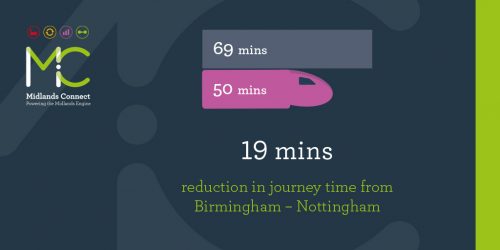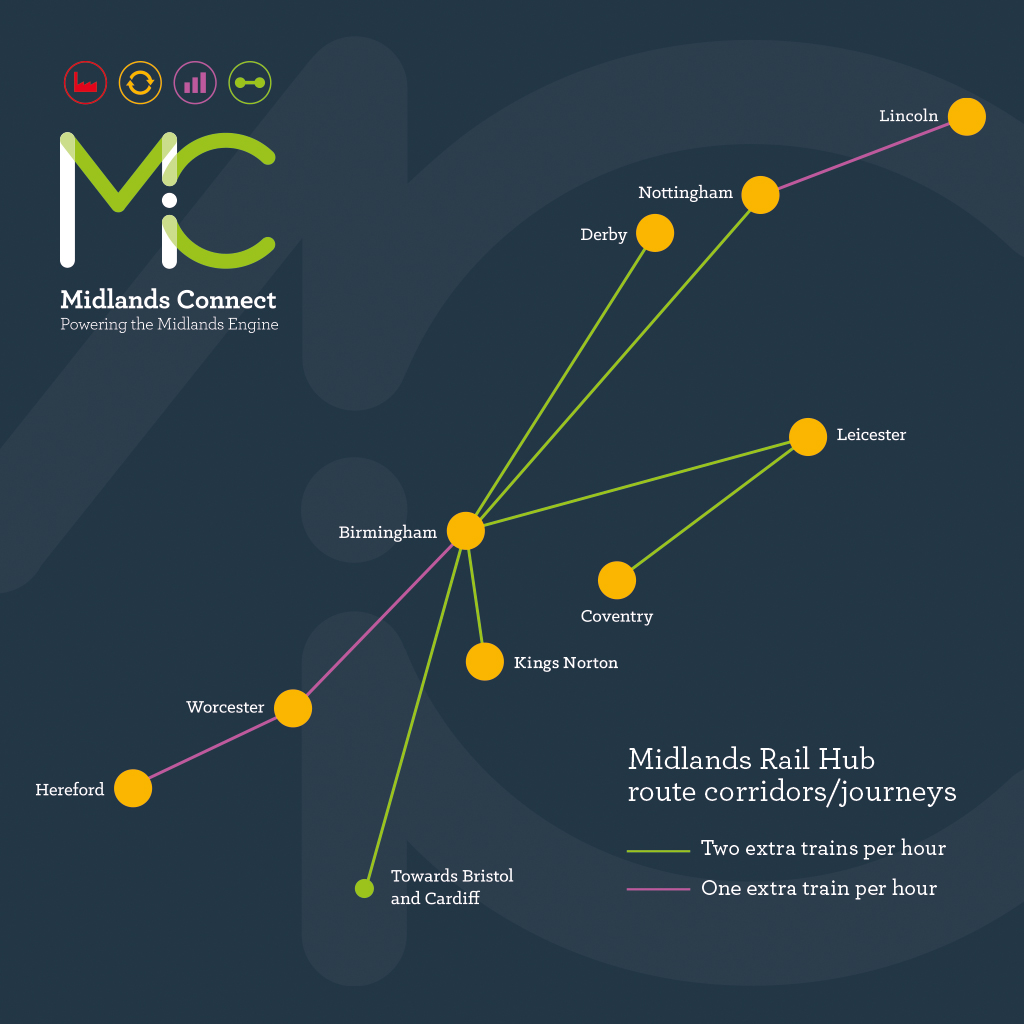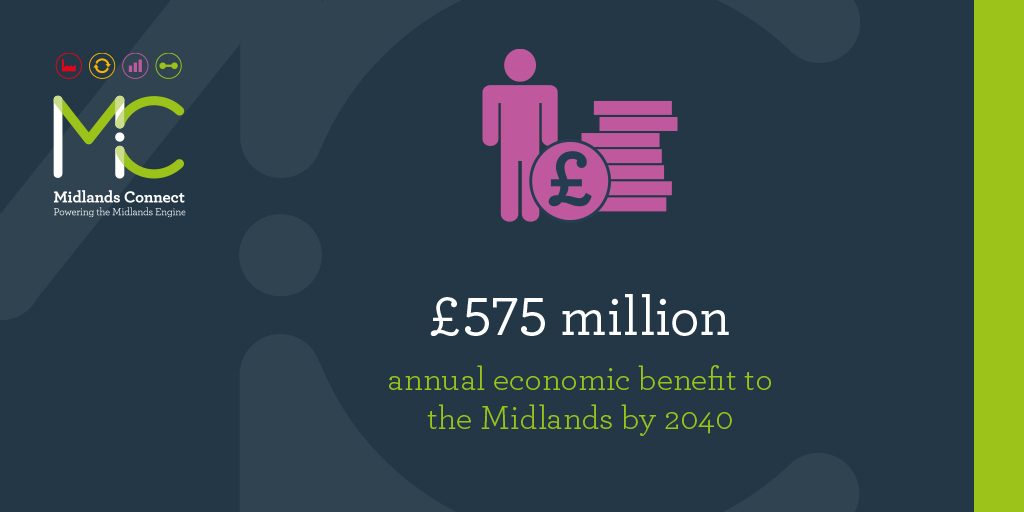20-year rail plan revealed to create Midlands Rail Hub

A 20-year strategy to create a ‘Midlands Rail Hub’ will create the capacity for six million more individual train journeys each year, boost the Midlands’ economy by £649m pounds a year and shift £22bn of freight from the roads to the railways, according to Our Routes to Growth, a report unveiled today (9 July) by the Sub-national transport body Midlands Connect and the Secretary of State for Transport Chris Grayling.
Midlands Connect says the Midlands Rail Hub – a programme of railway network interventions to maximise capacity across the Midlands’ network – would bring 1.6 million more people in the Midlands within an hour’s journey time of the region’s biggest towns and cities by creating new routes, reducing travel times and adding 24 new passenger trains every hour to the network.
Midlands Connect is working with partners including Network Rail, West Midlands Rail Executive, Transport for West Midlands and Transport for the East Midlands to develop the proposals, as well as supporting partners where appropriate in developing wider ambitions for the Midlands rail network.
With four of the UK’s five main rail freight routes passing through the Midlands, Midlands Connect says the Rail Hub will also benefit businesses by “significantly increasing” rail freight capacity, with 36 new paths per day shifting the equivalent of 4,320 lorries every day from the roads to the railways – more than five times the additional daily freight capacity of HS2.
For passengers, the Midlands Rail Hub will double the number of trains per hour between Birmingham and Nottingham, Birmingham and Leicester, and Birmingham and Hereford, and increase hourly services between Birmingham and Derby from four to six. There are also plans to reinstate a direct service between Coventry and Leicester, the largest pair of cities in such close proximity in the country without a direct rail service.
The report also outlins plans for the Midlands Rail Hub will also significantly reduce journey times, including around 50 minutes between Nottingham and Birmingham (currently 69 minutes, an hour between Hereford and Birmingham (currently 84 minutes) and approximately 35 minutes between Leicester and Coventry (direct service, currently 48 minutes with a change at Nuneaton).
One of the major new routes proposed is the reinstatement of direct services between Coventry and Leicester, driving additional demand between two of the Midlands’ biggest cities. The report also recommends re-opening local lines going into Birmingham Moor Street from Kings Norton along the Camp Hill line, an improvement facilitated by plans for the construction of three new local stations (Hazelwell, Kings Heath and Moseley) and a new junction with the Chiltern line going into Moor Street.
Transport Secretary Chris Grayling said: “These proposals capture the extraordinary economic potential and ambition of the Midlands Engine – focused on driving forward growth, creating new jobs and delivering better journeys for passengers across the region. This is why the Government has invested £5m to help develop the Midlands Rail Hub.
“It is excellent to see Midlands Connect are committed to maximising the significant benefits to connectivity and capacity HS2 offers, as well as ensuring we capitalise on the biggest modernisation of the rail network since the Victorian era. The Government will continue to work with Midlands Connect to develop these proposals to help ensure the region has the transport system it needs for a prosperous future.”
Sir John Peace, chairman of Midlands Connect and Midlands Engine, said: “Improving East-West connectivity and access to HS2 services are top priorities for Midlands Connect. The Midlands Rail Hub proposals can bring our great towns and cities closer together and accelerate the massive job creation we’re seeing all over the region. The potential to greatly increase the amount of rail freight running through the region is also a big opportunity to make the most of the released capacity from HS2 and reduce the amount of freight on our already congested roads.
“The initiatives outlined in Our Routes to Growth are based on thorough research and detailed studies to identify which projects will give the greatest returns to rail passengers, road users and most importantly, the regional and national economies. Britain needs a transport infrastructure that delivers more jobs, a better quality of life and attracts greater international investment.”
Matthew Hammond, Midlands region chairman for PwC and chairman of West Midlands Growth Company, said: “For businesses the Midlands represents strong growth prospects and a location where they can reap the benefits of a well-connected transportation network. Further regional growth will be realised from the catalytic effect of HS2 services in just eight years. However, with continued success there is greater pressure on our existing infrastructure.
“The Midlands’ position at the heart of the UK road and rail networks presents a fantastic opportunity to target investment that can benefit the whole country, and Midlands Connect’s Our Routes To Growth report provides the region with an exciting blueprint to progress this ambition.”
Our Routes to Growth also outlines the development of Midlands Connect’s priority road, rail and innovation projects, including the Midlands Rail Hub, A46, Midlands Motorway Hub, Accelerating the HS2 East Midlands Hub, Smart Ticketing, Major Road Network, A5, A50/A500, Hereford Bypass and Mid Wales Connectivity.
It is Midlands Connect’s fifth report since Picking Up The Pace was released in July 2016, demonstrating the scale and potential of the region.









